This summer, students through the AMRE program with funding from the Sherman Fairchild Foundation are working in the Wooster Tree Ring Lab doing historical dating. Kendra Devereux, Alexis Lanier, and Juwan Shabazz are working with clients to date local barns, cabins and houses, to update pre-existing tree-ring chronologies, and to examine the collected data as a record of past climate. Two additional students are also working in the lab with data collected from Columbia Glacier in Prince William Sound, Alaska. Josh Charlton and Victoria Race, who are funded by NSF (National Science Foundation), will be helping out the AMRE students, but primarily will be developing ice flow models and using tree rings to reconstruct mass balance for Columbia Glacier in Prince William Sound, Alaska.
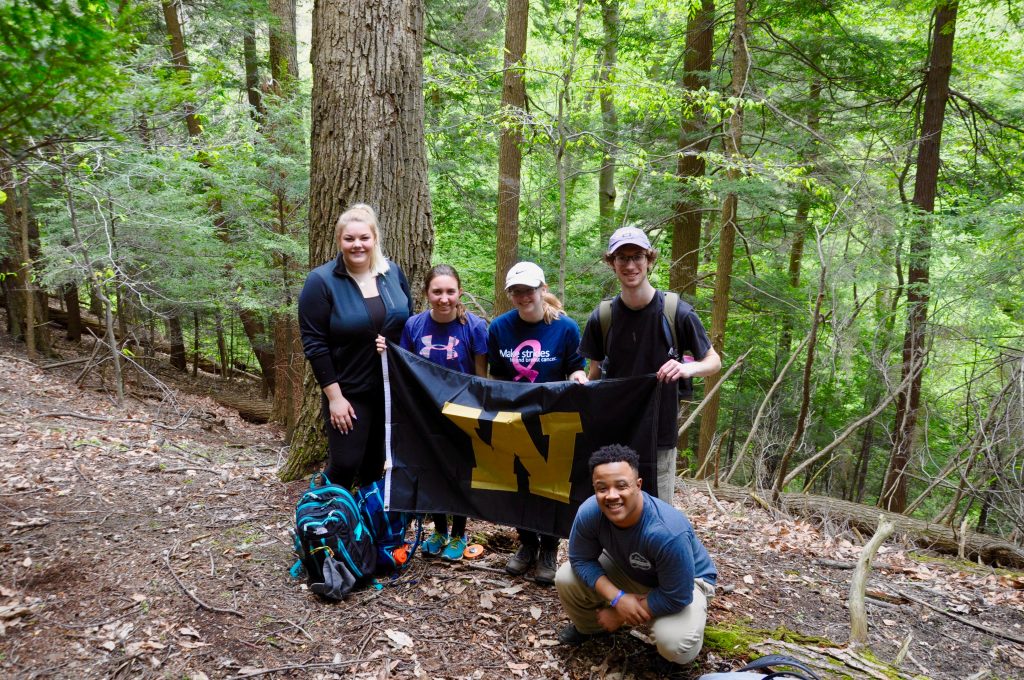
Summer researchers at Stebbins Gulch in the Holden Arboretum. Pictured left to right: Victoria Race (’19), Kendra Devereux (’21), Alexis Lanier (’20), Josh Charlton (’19), and Juwan Shabazz (’19).
The group has worked on a few different projects thus far. Their first assignment was to update the chronology for the Holden Arboretum in Kirtland, Ohio. The group has gone to the field site twice now to collect core samples from living Chestnut Oak trees in Stebbins Gulch. The AMRE group is currently working on mounting the fresh cores from our second trip and will be gathering and analyzing this data in the coming weeks.
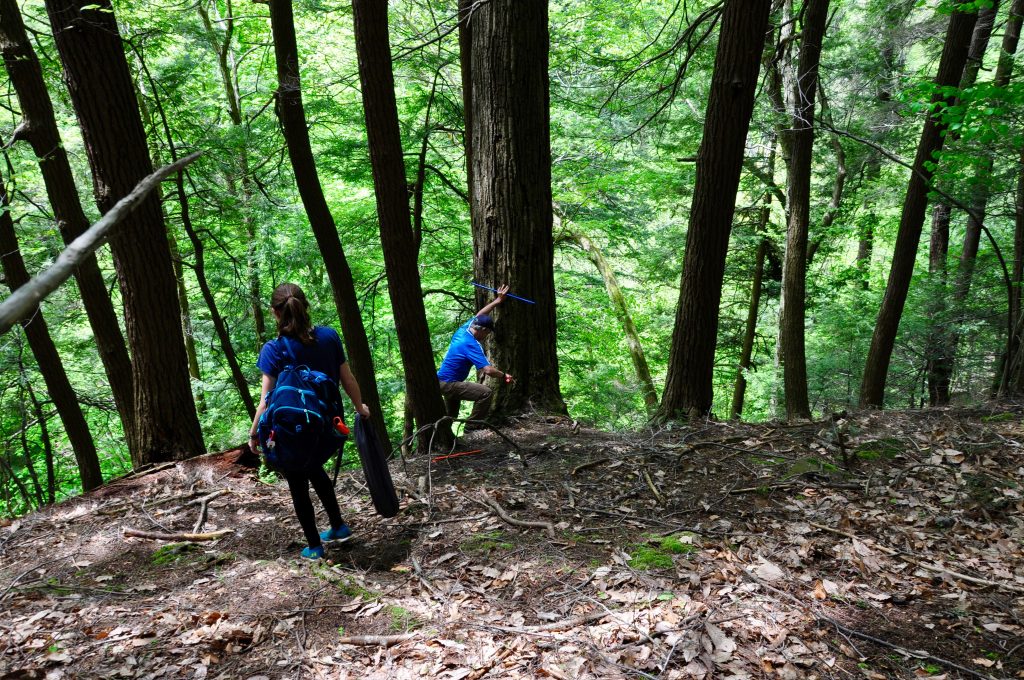
Sampling chestnut oak trees at Stebbins Gulch.
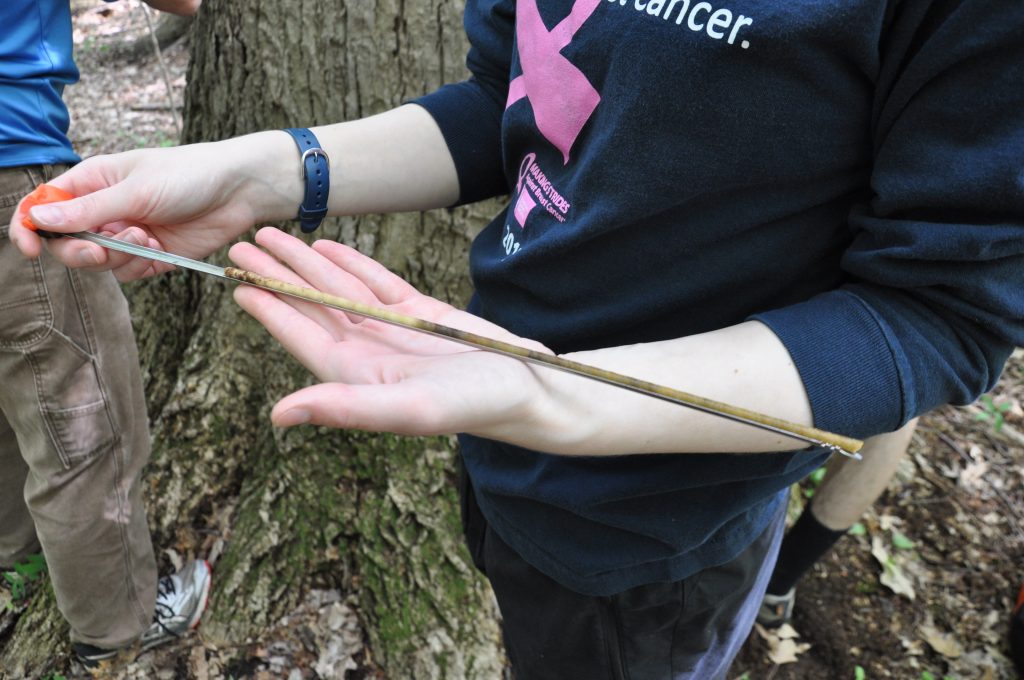
Freshly extracted core at Stebbins Gulch.
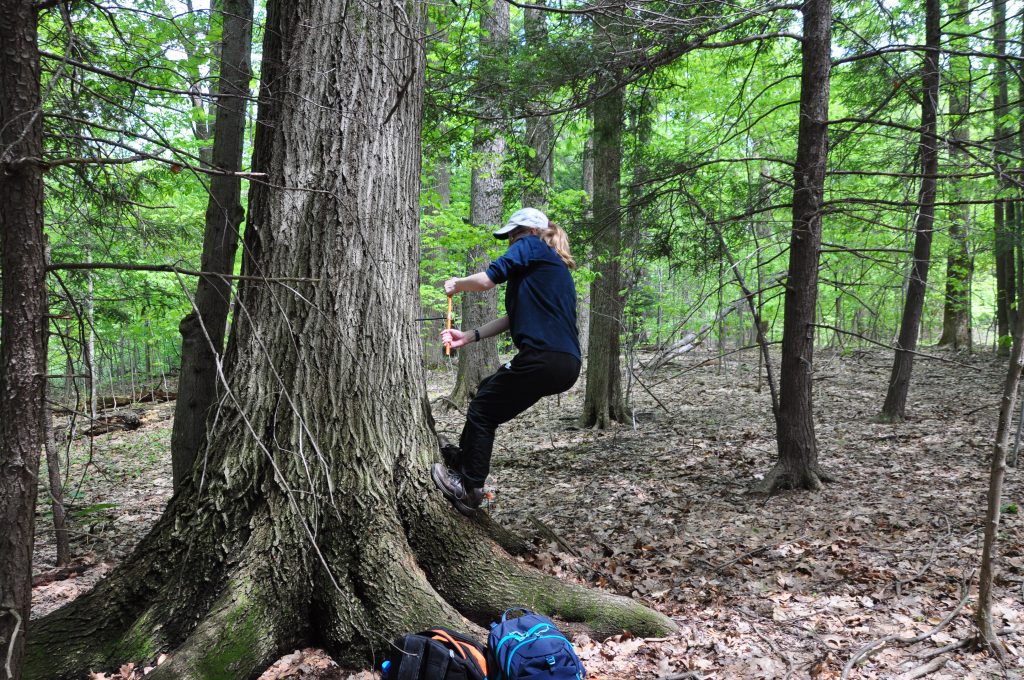
Alexis Lanier removing increment borer from a sampled tree.
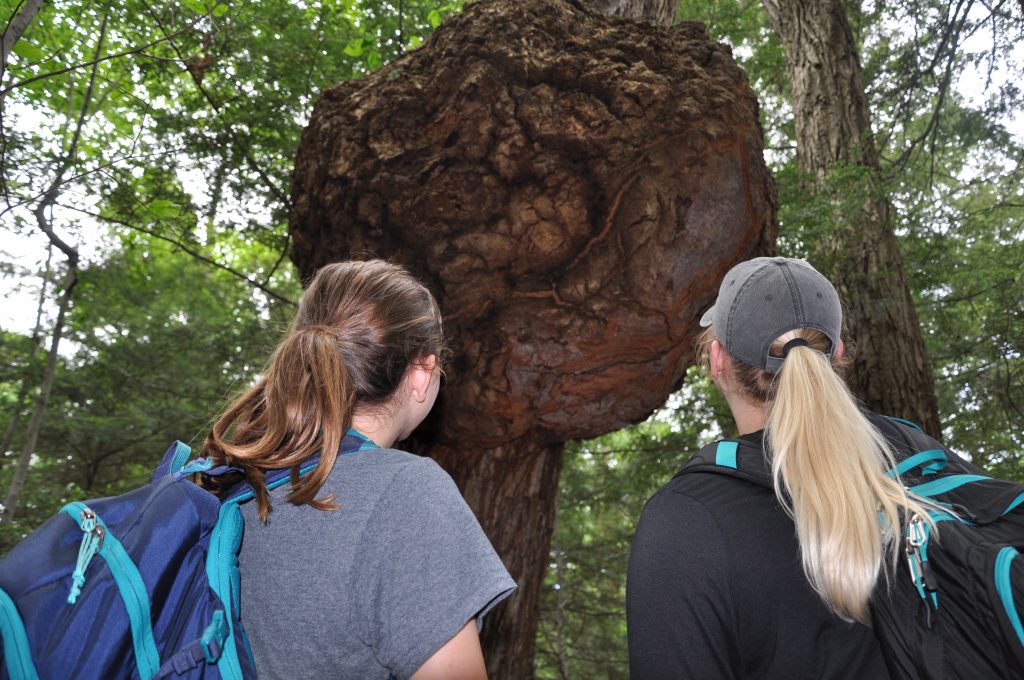
Kendra and Victoria looking at a giant burl on a sampled chestnut oak.
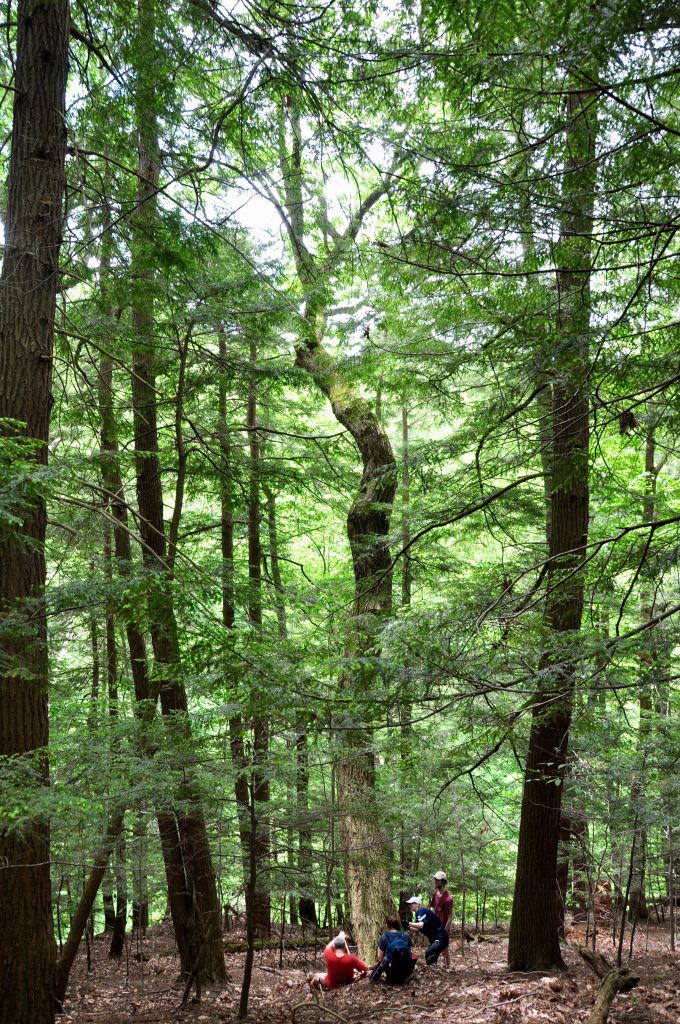
Chestnut oak tree being sampled at Stebbins Gulch.
The AMRE group has also worked with clients to date two local structures, Stratford Cabin and Gingery Barn. The group was able to date both samples and provide a calendar date for our clients, informing them when the trees used for building these structures were felled. Stratford cabin was dated to 1849 and Gingery Barn was dated at 1883. To provide these dates, the students counted and measured the tree rings. This data was then compared to other developed chronologies, a process called cross-dating, which allows us to assign a calendar date to these rings.
In the coming weeks, the group will be finishing up the work on Stebbins Gulch, dating some more historical structures from Sonnenberg Village, and compiling Columbia Glacier data. Further information on these projects can be found on the Tree Ring Lab’s website.
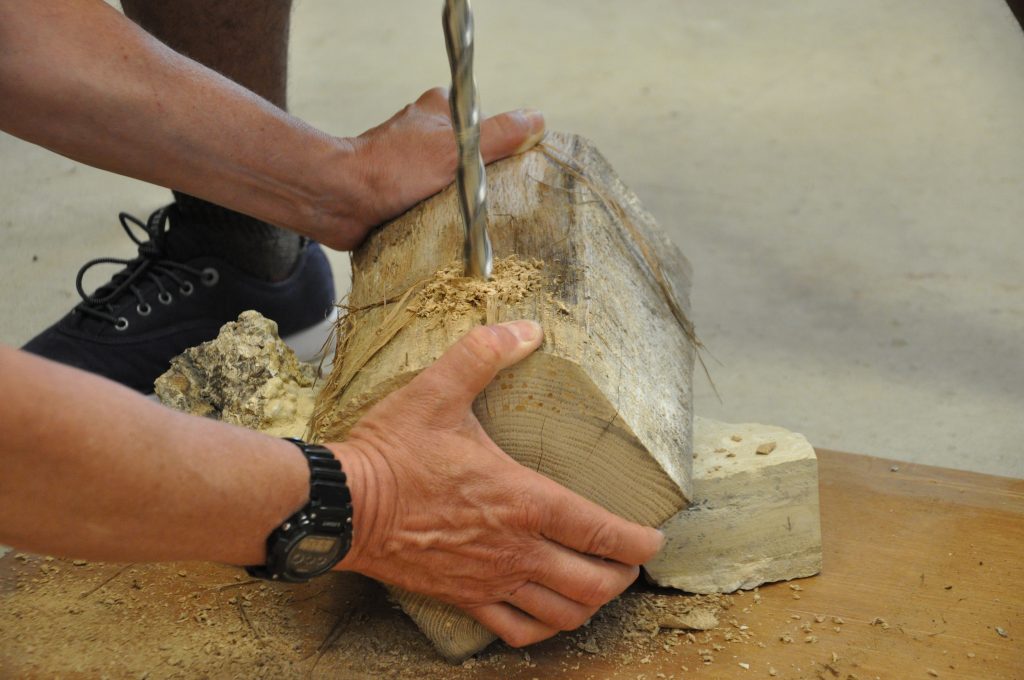
Juwan drilling into a beam sample to extract a core from Gingery Barn.
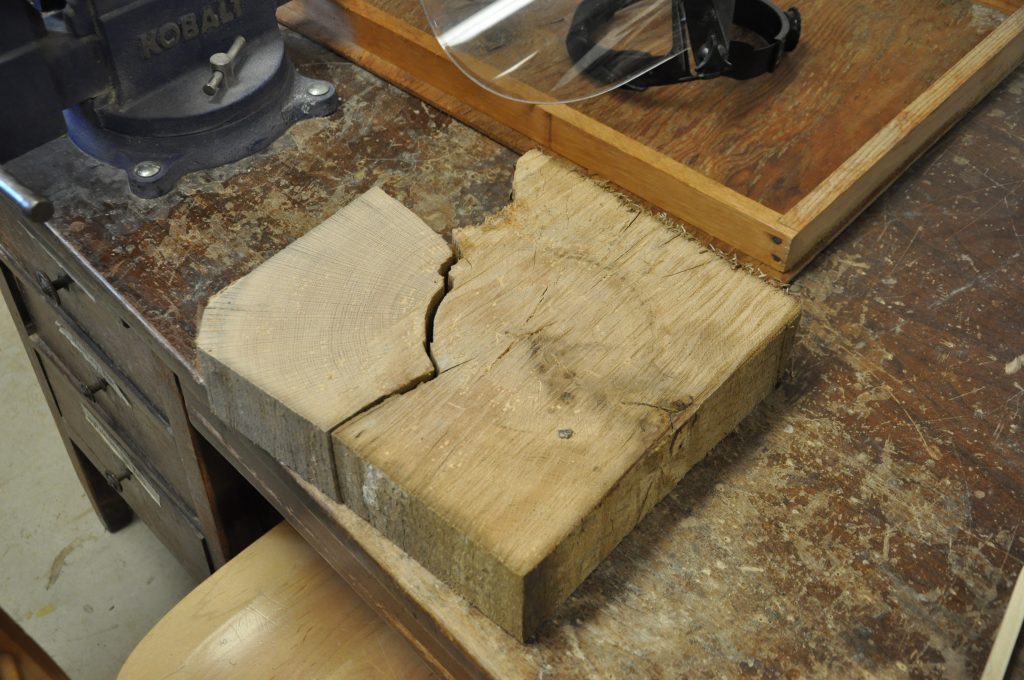
Oak slice ready for sanding from Gingery Barn.



That’s an interesting project! What do you know about the natural range of Chestnut Oaks? The tree-trunk photos look a little different from the local ones here, where the bark forms deep grooves, similar to those of a typical cottonwood tree. Here, near Mohican State Park, they are not native, and the only grove I know of was planted by the CCC, in the 1930s, on top of Vista Point, overlooking the Clear Fork Gorge, just below the Pleasant Hill Dam (although they seem healthy here, with lots of seedlings). Are the ones from Holden planted or naturally self-seeded? Are they part of an out-of-place-microclimate stand of trees, like the Eastern Hemlocks of Clear Fork Gorge?
Hi Bill – Astute observation as one of the trees you refer to in the post may not be a Chestnut Oak. The oaks at the Arboretum are old growth – they were cored in 1983 by Ed Cook at the Tree Ring Lab of Lamont-Doherty Earth Observatory and he has the record thus far of an inner ring date of CE 1612. We will report how old our samples are in a future blog post. The group will be working up the tree-ring record and they will look into the range and eventually the climate response of the trees. This is our first experience with Chestnut Oak – did not know the CCC planted them as well. Thanks for the information.
Well done, Tree-Ring Team!
Thanks for the info, Greg! I guess I didn’t realize there was any substantial old growth left in NE Ohio. Cook Forest, in NW PA, is always advertised as being one of the only old growth forest stands left in the East….
Anyway, I think my first experience with Chestnut Oak was at the Mound Builders park in Newark, where they constitute a substantial part of the tree mix (if I’m remembering correctly).
You should do a post on Donald Currey, the (in)famous UUT researcher who managed to get the (then) oldest known Bristlecone Pine cut down in the early 60s, when he got his corer stuck in it, only to have the tree felled by a “helpful” NFS employee, just to free the device. I believe it was located in what would eventually become Great Basin National Park, one of my favorite places in Nevada (mainly because no one goes there). I don’t know if the story is apocryphal, but it is very entertaining, and a good way to introduce dendrochronology, alongside the mistakes that often accompany good scientific work, to students.